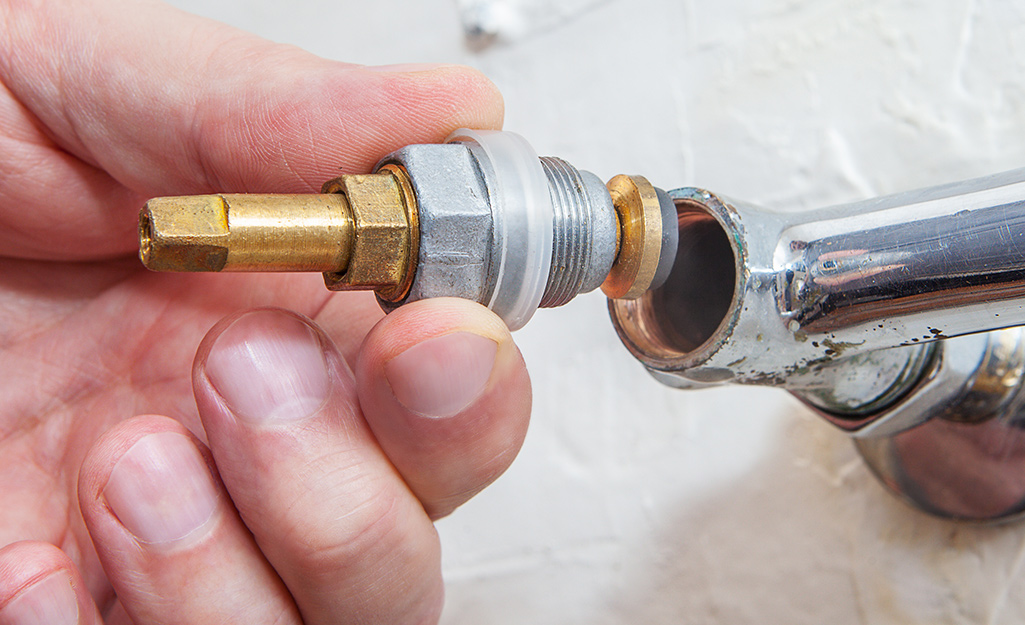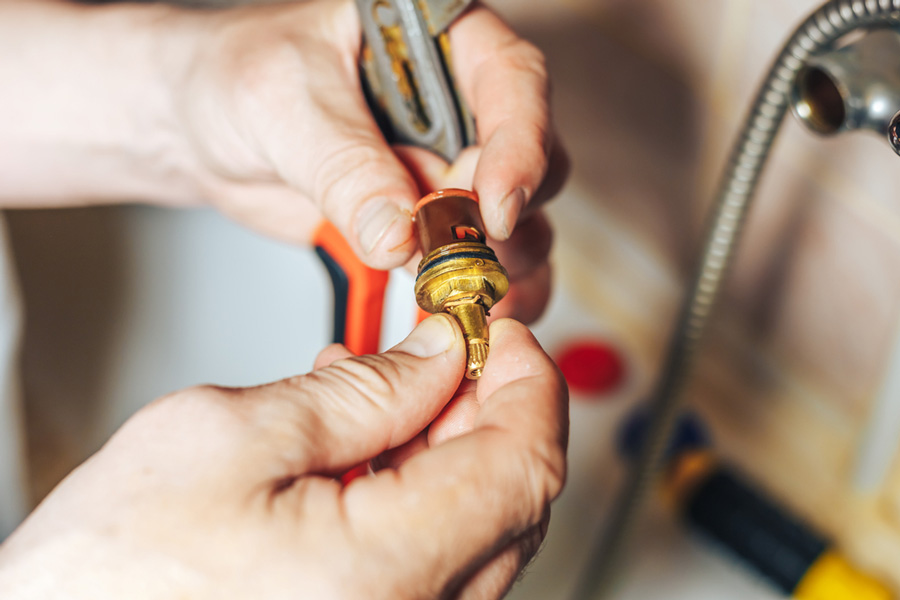Understanding the Significance of Correcting a Broken Faucet
Understanding the Significance of Correcting a Broken Faucet
Blog Article
What are your ideas regarding 4 Common Reasons for a Leaky Faucet?

Leaking taps could feel like a small inconvenience, but their effect exceeds just the nuisance of the noise. From drainage to incurring unnecessary monetary expenses and health and wellness dangers, neglecting a leaking faucet can result in various consequences. In this article, we'll explore why it's crucial to address this common family issue without delay and properly.
Waste of Water
Environmental Influence
Leaking faucets add substantially to water waste. According to the Epa (EPA), a single tap dripping at one drip per second can squander greater than 3,000 gallons of water annually. This not just pressures water resources but additionally impacts communities and wildlife depending on them.
Step-by-Step Guide to Dealing With a Dripping Faucet
Tools Called for
Before trying to repair a trickling faucet, gather the essential tools, consisting of a flexible wrench, screwdrivers, replacement components (such as washing machines or cartridges), and plumber's tape.
Common Faucet Issues and Their Solutions
Recognize the kind of tap and the details issue triggering the drip. Typical troubles consist of damaged washers, corroded valve seats, or malfunctioning O-rings. Describe supplier guidelines or online tutorials for step-by-step assistance on repair services.
Financial Expenses
Boosted Water Expenses
Beyond the environmental impact, dripping faucets can blow up water costs considerably. The accumulated wastefulness with time equates into higher energy costs, which could have been avoided with prompt repairs.
Possible Building Damages
Moreover, long term dripping can bring about harm to fixtures and surface areas surrounding the faucet. Water buildup can trigger discoloration, corrosion, and also architectural problems if left neglected, resulting in extra repair expenses.
Wellness Issues
Mold And Mildew and Mold Growth
The continuous existence of dampness from a dripping faucet produces an excellent environment for mold and mildew growth. These fungis not just compromise indoor air high quality however additionally posture wellness dangers, especially for individuals with respiratory conditions or allergies.
Waterborne Illness
Stagnant water in dripping faucets can become a breeding ground for germs and other pathogens, enhancing the danger of waterborne diseases. Contaminants such as Legionella microorganisms grow in stagnant water, potentially leading to serious ailments when consumed or inhaled.
Do it yourself vs. Expert Repair work
Advantages and disadvantages of DIY Fixing
While some may try to repair a dripping faucet themselves, do it yourself repair services come with their own collection of difficulties. Without appropriate expertise and tools, DIY efforts can intensify the problem or lead to incomplete repair services, prolonging the problem.
Advantages of Working With a Professional Plumber
Employing a specialist plumber ensures that the underlying reason for the leaking tap is addressed efficiently. Plumbing professionals have the proficiency and devices to identify and repair faucet problems effectively, conserving time and lessening the threat of more damages.
Ecological Obligation
Private Contribution to Preservation
Taking duty for dealing with trickling taps lines up with broader efforts towards water preservation and environmental sustainability. Every individual's activities jointly make a considerable impact on preserving priceless resources.
Sustainable Living Practices
By prioritizing punctual repair services and adopting water-saving behaviors, individuals contribute to lasting living practices that profit both present and future generations.
Safety nets
Regular Upkeep Tips
To prevent trickling faucets, execute routine upkeep such as cleaning aerators, inspecting for leaks, and changing worn-out parts without delay. Furthermore, take into consideration installing water-saving gadgets or updating to more effective components.
Relevance of Prompt Repairs
Attending to trickling taps as soon as they're seen prevents further water wastefulness and prospective damages, ultimately conserving both water and cash over time.
Impact on Building Worth
Understanding of Well-Maintained Residential Or Commercial Property
Preserving a home in good condition, consisting of addressing maintenance issues like trickling taps, enhances its perceived worth and value among potential buyers or lessees.
Impact on Resale Value
Characteristics with well-maintained plumbing components, including faucets, command greater resale worths in the property market. Resolving trickling taps can contribute to a positive perception throughout home examinations and negotiations.
Conclusion
Dealing with a trickling faucet goes beyond plain convenience; it's an essential step toward conserving water, decreasing monetary expenses, and securing health and building. Whether through DIY fixings or specialist help, acting to repair leaking faucets is a little yet impactful method to promote liable stewardship of resources and contribute to a much healthier, a lot more sustainable future.
Most Common Reasons for a Leaky Faucet and How to Stop the Drip
Whether it’s your kitchen faucet leaking or a bathroom faucet leaking, one leaky faucet can waste anywhere from three to 30 gallons of water every single day. If the constant drip-drip-drip doesn’t get your attention, your water bill will. The good news is that, by following a few simple steps, chances are pretty good you can fix the problem yourself.
Why is it dripping?
Before you start taking things apart, let’s break down some of the most common causes of a leaky faucet.
Bad O-ring.
A cartridge is a valve that controls the flow of water into the faucet spout. On cartridge faucets there’s an O-ring—the little disc attached to the stem screw that holds the faucet handle in place. If it’s loose or worn-out, it can cause your sink handle to leak. Of course, the cartridge itself could be worn out. If that’s the case, make sure you replace it with the exact same kind.
Corroded valve seat.
The valve seat connects the faucet and the spout. If the leak seems to be coming from the spout, it might be because a buildup of water sediment has corroded the valve seat.
Worn-out washers or seals.
A leaky spout could be caused by a bad washer that rests against the valve seat. It’s just a matter of time before friction takes its toll. It could also be the wrong size washer or one that’s been installed incorrectly. Water sediments can also corrode inlet and outlet seals.
Water pressure.
If the faucet only drips now and then, or when you turn the handles a certain way, you should probably check your home’s water pressure.
Loose or broken parts.
The adjusting ring and packing nuts in the stream screw can become loose over time, causing your sink handle to leak. Try tightening or replacing the packing nut. If the leak is coming from the pipes underneath the sink, you probably have a broken pipe or fitting. If that’s the case, you should definitely call a plumber.
Know your faucet.
Faucets come in a variety of types. Each one has its own assembly—and its own possible causes of leaks. Learning about the four most common kinds of faucets will help you know how to take them apart and make any repairs.
How to stop a leaky faucet
Fixing that leaky faucet doesn’t have to take a lot of time, money, or expertise. It’s usually a simple matter of replacing a worn-out washer or gasket, a loose O ring, or another part. Chances are really good you can do this yourself if you follow these simple steps.
Shut off the water.
Before you tackle the faucet, cut off the water supply to the sink. There should be one valve for hot and one for cold. Hand-turn them clockwise with your hands till they close. If there are no valves under the sink, head to the basement and shut off the main water supply to the house. Then turn on the faucet until it empties out the water that’s still in the line and you’re ready to start. It’s a good idea to cover the sink drain with a plug or a rag so you don’t lose any small pieces and parts while you’re working.

I recently found that piece on while browsing the search engines. Sharing is caring. Helping people is fun. I praise you for being here. Revisit us soon.
Report this page